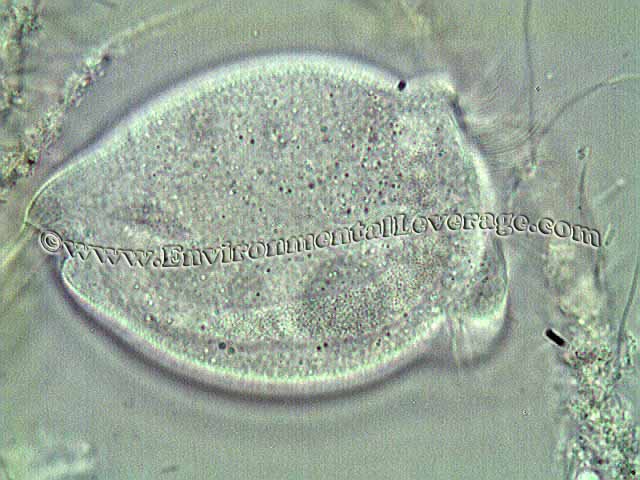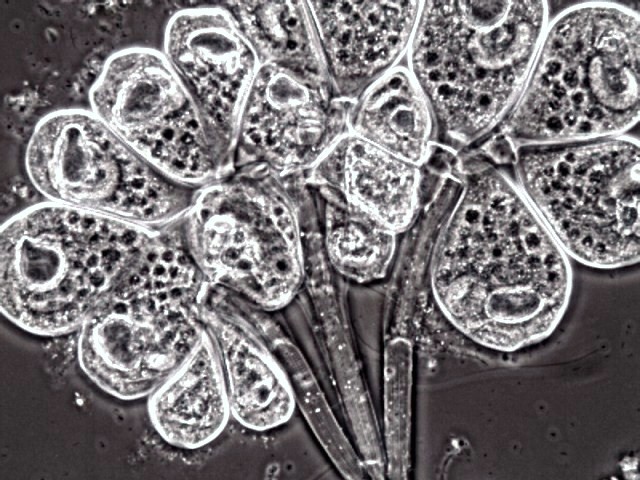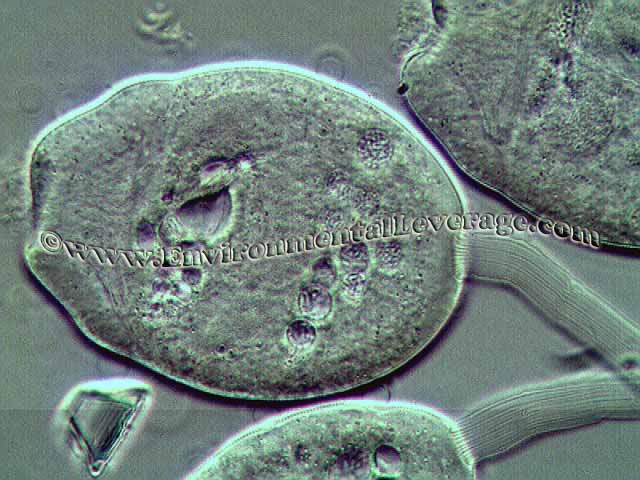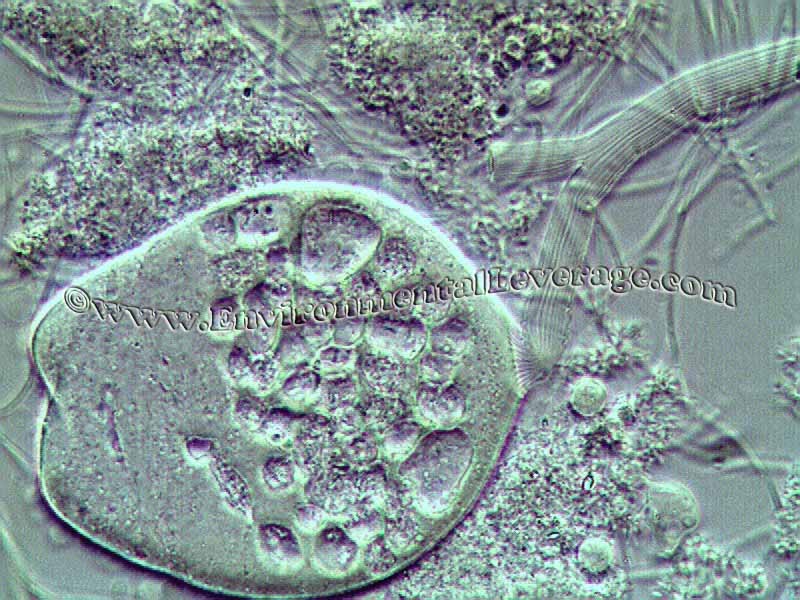Biological Products:
Bioaugmentation products for Wastewater applications in Papermills, Refineries, Chemical, Tanneries, Municipalities, Textiles, Steel, Agriculture, Animal feedlot, Gun Powder plant, Food and Beverage- Dairy Products, Orange Juice factory, Wineries, Cookie factory, Vegetable processing plant, Meat packing, Barbecue Restaurant, Aquaculture, Ornamental Ponds with algae , CAFO, Nursing homes, Military, Campgrounds, Universities, Regulatory agencies, River and Lake remediation
Lab Services:
Filamentous Identification Lab Service. One reason to identify filaments is to determine the filaments characteristics and then determine the type present. If the type is found out, a root cause can usually be associated with a particular filament. If the cause is known, then a correction can be made to alleviate problems. Chlorination is only a quick fix. Without process changes, filaments will grow back after chlorination. Wastewater Biomass Analyses and Cooling Tower Analyses also available
Training Materials:
Training is an integral part of any job. Not everyone is at the same level of training. Many people want beginning concepts and basics. Some need technical information or troubleshooting. Some want equipment, technology or process information. We have developed a full set of Basic training, Advanced training, Filamentous Identification the Easy Way as well as custom training CD's Manuals. We also provide hands-on training classes and soon will have an Online "E-University".
Audits and Consulting:
At Environmental Leverage® Inc., we have a team of experienced individuals who come into your plant with a fresh pair of eyes. The system is checked from influent to effluent. System optimization, equipment efficiency and operational excellence are key components explored. Key Benefits Equipment efficiency Total Cost of Operation reductions Reliability and safety An onsite audit is conducted to examine system parameters, process controls, and current monitor and control procedures. A physical walk-through is conducted, process flow diagrams are examined, previous design criteria are examined and current standard operating procedures are evaluated along with data logs.
|
Stalked Ciliates What's New!
We have just added "Virtual Audits" to our capabilities. Check out our new Services. We are in the process of developing new courses for our ""Online E-University" in order to meet the needs of our global customers that cannot travel to our public classes.Visit our new website www.WastewaterElearning.com/Elearning
We hope you like the new look of our Higher Life form Identification Pages If you would like more information on bacteria, filaments or higher life forms, you might want to consider purchasing our Wastewater MicrobiologyTraining materials. We also have our lab that can perform a Wastewater Biomass lab analyses of your own MLSS for more information
Stalked ciliates
Identification Stalked ciliates are a type of protozoa that can be branched or unbranched. Stalked ciliates are "inverted bell-shaped bodies mounted on a stalk which is attached to a substratum." A key identification feature is the presence of cilia (minute hair-like projections) on the oral region of the organism. Stalked ciliates can be solitary or colonial. They can be branched also.
Additional Information: They are members of the class Ciliophora. Many different genera and species exist. Some genera commonly seen in wastewater are Opercularia, Vorticella, and Epistylis. Sheathed stalked ciliate secrete a lorica, an outer membrane that protects the ciliate. Single stalk ciliate consume food via vorticellids, oral cilia that wind completely around the top of the cell. Stalked ciliates attach themselves to the base of something, usually floc structures. Some stalk ciliate species contains a contractile, slightly sinuous filament that can rapidly coil up like a spring, pulling the cell body down.
Suctoria: Similar to stalked ciliates only instead of hairs, they have a rigid set of tentacles extending from the cell body which are hollow. They use these to spear their prey such as free swimming ciliates and flagellates. Usually sessile.
Environment They are one of the higher life forms found in waste water treatment processes. Stalked ciliates are usually an indication of a stable activated sludge operation. The species of stalked ciliates found can be used to indicate approximate MCRT. The colonial forms of stalked ciliates usually occur at higher MCRTs.
Stalked ciliates are found in large numbers when the bacterial population and dissolved oxygen concentration of the treatment process are high, the wastewater environment is stable and a mature floc structure has developed. Stalked ciliates usually indicate a stable wastewater environment and a healthy biomass. Heavy attached growth on the stalks usually indicate the stalks have been around quite a while in the system and things have been pretty stable.
If the biomass is really old and rotifers and nematodes are usually present, and all of a sudden large numbers of stalked ciliates show up, check to see if a sudden spike of BOD has occurred. Adjustments to RAS and wasting may need to be made in order to handle the sudden increase in BOD. Addition of biological products can also help overcome sudden spikes in BOD to help recover quicker and reduce changes or BOD or TSS permit violations at your final effluent.
How to find them: Microscopic examination of a wet mount. Some of the larger stalks can be seen at 40-100x and 200x. Blow them up to 400x and 1000x though to see more details.
It depends upon what the rest of the biomass looks like. Typically the presence of Stalked ciliates indicates a medium to low loading of food vs. the amount of biomass available to eat the organics. Stalked ciliates indicate a relatively healthy system, no toxicity, progressing along in a sludge age towards a medium to stable age. If mixed in with the right amount of stalked ciliates, a few free swimming ciliates and a rotifer or two, you are probably doing very well. If Suctoria are present, you probably have crystal clear water!
Stalked ciliates usually anchor themselves to a stable floc formation and
create a vortex by swirling the water around to filter in single celled
bacteria. Usually, this means that the sludge is a bit older than if only
amoebae and flagellates are present and TSS is clearer and more floc
structures are developing.
What should I do if there is a
significant change in my higher life forms and all of a sudden there is an
increase in stalked ciliates?
You might want to adjust your wasting or RAS levels. Some plants add
bioaugmentation products in cases of higher loadings. You might need to
slightly increase the dosage of product. If using micronutrients, adjust
these levels also if the loading is significant.
If you have extremely heavy attached growth on the stalks, that means they have been in the system a very long time. They are very stable and content. You probably have had very few BOD swings and a pretty stable sludge age.
More to come soon! For more information on Higher Life Form Identification Stalked ciliate Bug of the Month More photos to come. . .
If you need more information on our Filamentous Identification the Easy Way Training CD or on Internet training on Filamentous bacteria, causes and controls. How and why on Wastewater Biomass Analyses
|

 When
trying to determine species in your wastewater treatment plant, stick to the basics, and focus on the causes
and controls of the higher life forms present. The main point of any
wastewater biomass identification is not
to get a PhD, but to fix your plant!
When
trying to determine species in your wastewater treatment plant, stick to the basics, and focus on the causes
and controls of the higher life forms present. The main point of any
wastewater biomass identification is not
to get a PhD, but to fix your plant!
 What
does it mean when I see an increase in Stalked Ciliates in my system?
What
does it mean when I see an increase in Stalked Ciliates in my system? 

